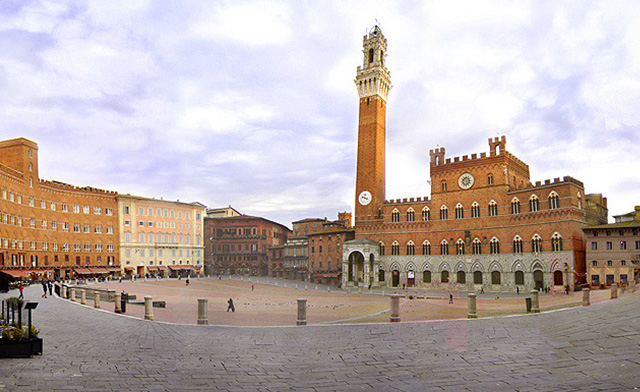 Siena
Siena
Distance: 40 minutes by car
Designated as a UNESCO World Heritage Site, Siena is a glorious city filled with exquisite architecture and monuments of great splendor. The embodiment of a medieval city nestled in the green hills, Siena is an important centre of culture and home to an important University. Besides tourism, the city and surrounding area’s most important activities relate to raising livestock and to agriculture, both highly developed in the province, with production of world renowned wines and olive oils.
Enjoy the Street Market on Wednesdays or be part of the most famous celebration in Siena- the Palio, an ancient horse race, held in the heart of the city. It stirs the passions of all who participate and all who watch. Ten riders, representing ten of the seventeen “contrade”, or city wards, dressed in their ward’s colors, race their magnificent horses bareback, hoping to win and bring honor to their contrade. It is a breathtaking experience to witness this race which takes place every year on July 2 and August 16 in the “Piazza del Campo”.
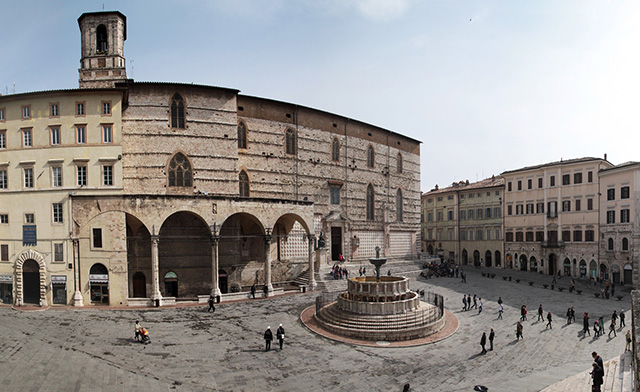 Perugia
Perugia
Distance: 45 minutes by car
In the region of Umbria, Perugia is a charming city characterized by its typical “tentacle shape”. It’s an important cultural centre with its university and picturesque monuments, famous for its food, confectionery, and textiles. The major enterprises of the area include mechanics, woodworking, and polygraphics.
 Montepulciano
Montepulciano
Distance: 20 minutes by car
Located between the Val di Chiana and Val d’Orcia, beautiful Montepulciano is unique due to its urban structure: the main streets fit longitudinally, at different levels, connected by steep roads sometimes surmounted by arches. It is the birthplace of the artist Poliziano, and experienced great artistic development during the late Renaissance.
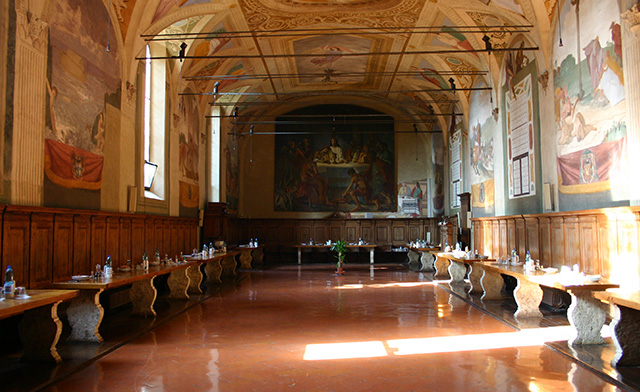 Abbazia di Monte Oliveto
Abbazia di Monte Oliveto
Distance: 20 minutes by car
The Abbey of Monte Oliveto, located near Asciano, dates back to 1300, and was founded by a hermit, a scion of the local nobility, who decided to retreat to this area with two friends. Over time, it has come to be inhabited by monks who have established a fine reputation developing art and the local produce, such as their famous liquors, honeys, teas, olive oils and wines.
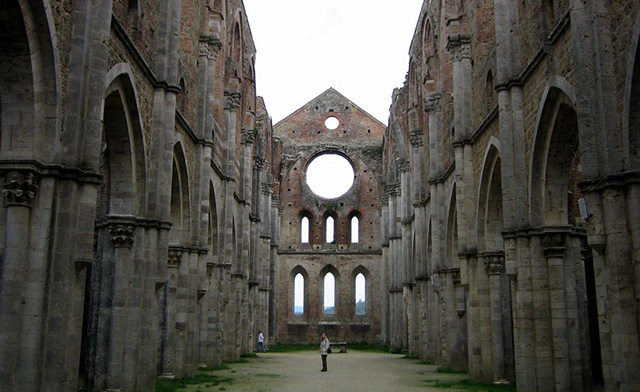 Abbazia di San Galgano
Abbazia di San Galgano
Distance: 1 hour 30 minutes by car
The ruins of the monumental complex of the Abbey of San Galgano stand at the foot of Montesiepi Hill, south-west of Siena. Despite their incompleteness, they are one of the most significant examples of Gothic Cistercian architecture in Italy. A fine example of this is the Striking Sword, stuck in the rock by Galgano, in the Chapel of Montesiepi, a small church located on a hill, a few hundred yards from the abbey.
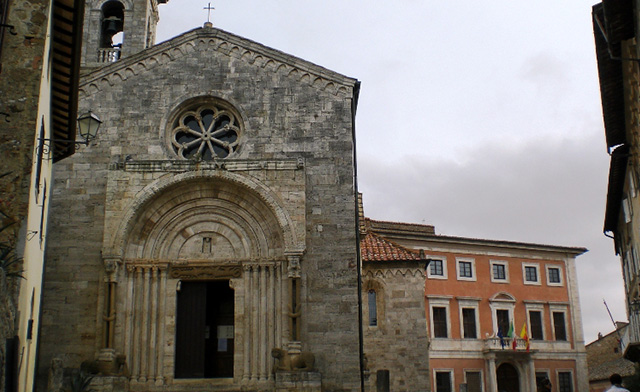 San Quirico d’Orcia
San Quirico d’Orcia
Distance: 40 minutes by car
A fortified village situated along an old street called Via Cassia. The fifteenth-century walls are almost intact and edged with 14 small towers; within the perimeter there is the magnificent Romanesque Church. Close to the walls are the Leonini Gardens, a public park consisting of a forest of oaks.
 Gaiole in Chianti
Gaiole in Chianti
Distance: 1 hour by car
This is an important city within the Chianti Classico region, which always played an important role as market center for the castles and towns nearby. Among the main attractions is the Brolio Castle, built by the Florentines after 1484, one of the first examples of bastion forts in Tuscany.
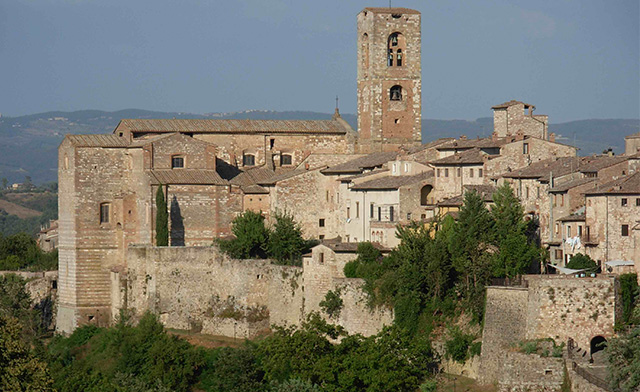 Colle di Val d’Elsa
Colle di Val d’Elsa
Distance: 1 hour by car
Developed on three levels, this city was built according to a unique urban plan. Famous for the production of crystal ware, it is also an important tourist town. It blends typical medieval sights, such as the Castle, ancient towers, houses and streets, with the Renaissance style of the Palazzo Comunale and Palazzo Pretorio.
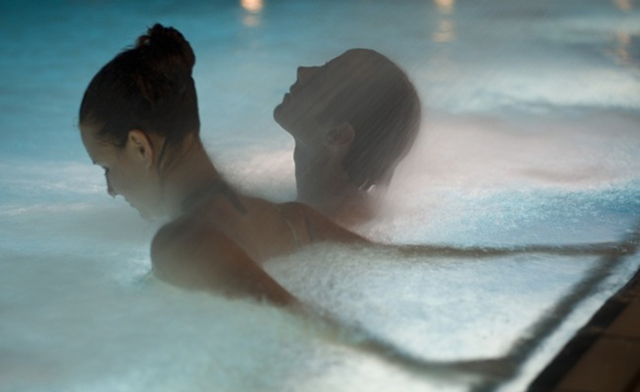
The Thermal Baths
There are several thermal baths located in the Sienese area:
In the East –Rapolano- with hot sulphurous waters; in the South-Bagno Vignoni; close to Maremma, the Petriolo Therms; and in the Val di Chiana area, the famous Chianciano Therms.

